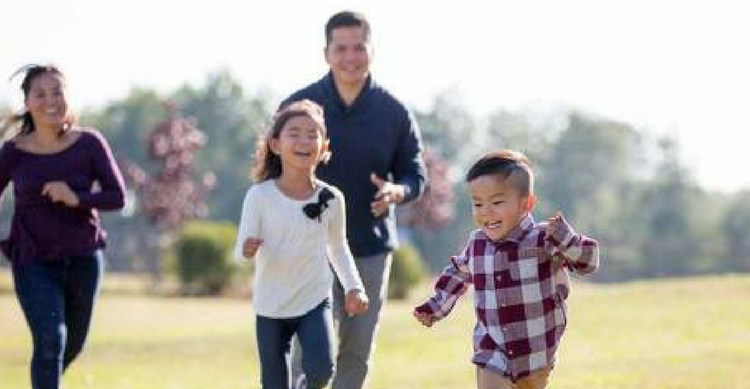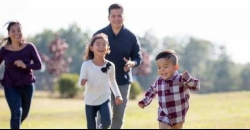
1. How common are these conditions in the UAE, do have any statistics?
Conditions such as in-toeing, flat feet, bowlegs and knock knee are rather common conditions affecting infants and children. In all of these cases, parents often anxiously rush to consult a specialist in order to check if their child’s limbs are normal. In most cases, these issues are not serious health concerns but a part of development.
2. How frequently do you see these cases as a doctor and how do you usually deal with them?
In-toeing or pigeon toe is an extremely common condition found in children which they generally outgrow with age. Parents often consult us with the request to fix the deformity in their child’s feet. However children below the age of 8, with this condition do not require any specific treatment as they will outgrow it naturally.
In their first year of life, almost all children are bow legged. No specific treatment is required as the legs straighten naturally by the second year. Bowlegs and knock knees are extremely common in children as they are born with bowlegs, this however only becomes noticeable once they begin standing/walking. Bow leg is a condition in which the children have their knees appearing to bow outside from their body. When children walk, they appear to be bow legged, however the legs tend to straighten without any treatment within 2 years. Knock knee, is when the knees appear to bend inwards towards each other, and seen around 3-6 years of age. It is normal for parents to be concerned about the deformed shape of legs of their child, however a slight degree of bowing or knocking is normal.
Medical intervention is required in such cases when the child’s knee is excessively angled inward or outward and has unequal knee angles. If the child suffers from bowlegs even after completing 3 years of age and knock knee even after 7 years or complains of pain or discomfort connected to the knee, a parent must ensure that the condition is checked with a specialist.
Flat foot or also called as flexible flat foot, is yet another common condition noticed in children. Flat foot is a condition in which the foot of the child sits flat on the ground when they stand and the curve in the middle disappears. Majority of the times this condition causes absolutely no harm and does not require any treatment. The condition still remains unlike the others and may doesn’t get corrected with time, but people can live with it. In case a child faces pain or difficulty in performing certain activities, we recommend support using appropriate shoes. In rare cases, do children require surgery to correct their rigid flat foot and relieve pain. In order to undergo a surgery, the child has to be at least 8 years of age.
3. When should it be a point of concern for the parents (for each condition) and what is the expert help available for these cases?
As the name suggests, intoeing in the pointing of toes inwards. It is an extremely common thing in babies and young children, most commonly observed in children below 2 years of age. Intoeing is diagnosed by specialists when they see the child walk, it doesn’t really require any XRAY or scan. You do not really need to worry about the condition at all because it will get better with age. There is nothing that can really be don’t to correct this issue, so parents just need to keep a watch on the improvement being made. Children are just born with intoeing based on the way they are curled up in the womb so there is nothing much for parents to worry about if they notice their child walking slightly differently. However if the condition doesn’t improve at all and your child experiences pain or discomfort, which only occurs in rare cases, special shoes, braces, casts or corrective behavior mechanisms might be required. If the condition still persists till the child is 10 years old, surgical intervention might be required as the last resort.
Flat foot (flexible type) is also a common condition in children. The condition doesn’t correct itself but does not require any treatment unless it results in pain or decreased movement or abilities. If a child is obese or overweight and has flat feet, the associated factors must be addressed in order to improve the quality of life of the child. It is possible that the increased risk is caused due to the associated health issues.
Flatfeet can be of two types; rigid and flexible. Rigid flatfeet is caused due to abnormal development in the feet and is much more serious that flexible flat feet. Rigid flatfeet may require surgical intervention to correct it. On the other hand, flexible flat feet requires no treatment. Parents should be aware of the kind of flatfoot their children have and the degree of arch in their child’s feet.
Children with flatfoot must wear a soft orthotic in their shoe for at least 6 hours a day in order to reduce pain. If a child is overweight, regular exercise must be made a part of routine to maintain optimum weight. The shoes that children with flat foot wear must be soft and flexible in order to provide the required support and development of arches.
In case of bowlegs and knock knees, the only treatment required to treat these conditions; is observation involving allowing time for the legs to get corrected with age. As parents if you are very concerned about the condition, consult a specialist in order to confirm the diagnosis and rule out any other problems. Parents must be concerned about these conditions if the severity appears to be prominent on one side than the other. Two conditions that can be caused by bow legs and knock knees are rickets and Blount’s disease. Surgical intervention is required depending on the nature of the deformity and the age of the child.
4. Why do these conditions occur in children, is it genetics?
All of these conditions are common in children, none of them caused by genetic factors.
Intoeing
The condition is caused in children due to 3 reasons;
- Metatarsus adductus (the foot turns inward) – In this case the child has a curve in the foot. The child’s foot bends inward from the middle part of the foot to the toes. The curve is best visible on checking the sole of the child’s foot. The curve may be caused before birth because of the position the child was in inside the womb. In majority of the cases this condition gets corrected naturally as children grow up.
- Tibial torsion (the shinbone turns inward) – This condition occurs when there is an inward twist in the tibia or the bone between the leg and the ankle. This condition is also caused because of the child’s position in the limited space in the womb. This condition is also naturally corrected once the child starts walking, running etc. in the first year. In cases where the condition doesn’t improve and the child experiences difficulty in walking, surgical intervention might be required once the child completes 8 years.
- Femoral anteversion (the thighbone turns inward) – This occurs when a child’s thighbone is turned inwards and doesn’t seem obvious until the child completes 3 years of age or more. Such children often sit in the W position as they cannot sit cross legged. Surgical intervention is required to rotate the bone to the correct position and correct the bone alignment.
Flexible Flat Feet
Children are born with flat feet because the arch in the middle even though present is not visible because the feet are still developing. Most of the times people develop the arches on their feet during childhood. In some cases people do not develop the arches at all. People with an arch in their feet may or may not face any concerns.
Bowlegs and knock knees
These two conditions are normal and in very rare causes are result of a serious problem. A child during its first years appears to be bow legged and later knock kneed. However a few signs to keep note of in order to understand if these conditions are indicative of a serious underlying condition are;
- Only one side of the leg is affected
- An extreme curve inward or outward
- Bowlegs and knock knee persists even after 2 and 7 years of age respectively
5. Doctors say that these conditions will naturally be corrected, by what age and how do they get corrected? How should parents address them until they are corrected?
In case of intoeing, the condition is expected to get corrected naturally before the child starts walking. In case the child faces difficulty in walking, consult with a specialist who may suggest a few casts to be applied in order to straighten the intoe.
It is normal for kids to have flatfoot until 5-10 years of age. Unless the child experiences any difficulty in performing routine activities it is even fine for an individual to have the condition even until adulthood. Many people live with flatfoot without experiencing any difficulties.
Bowleg and knock knee generally gets corrected maximum within 3-4 years of age of the child.
In all these cases, parents must keep track of how their child’s condition is progressing or deteriorating. Parents need to be aware of any difficulty or discomfort experienced by their children. Upon observing any severity in these conditions, a specialist must be consulted in order to advice you on the next feasible treatment options for your child.
6. If they don’t get naturally corrected and are left untreated, what are the consequences for each
If you are concerned about excessive deformity, it is better to get your child assessed, yet bear in mind that the most common cause is only normal development and treatment or further investigation is rarely necessary. Only a few cases, require special attention and a clinician will be able to guide best regarding this.

